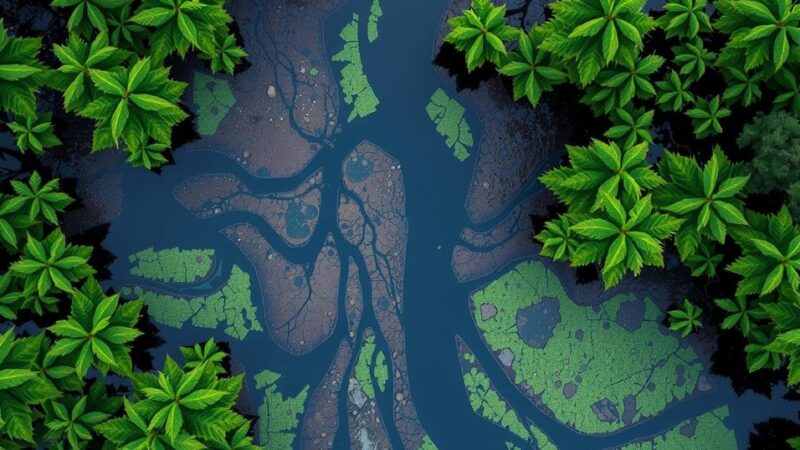Namibia’s dry woodlands significantly contribute to carbon sequestration, with small trees and shrubs playing a crucial role. Traditional carbon assessments focusing solely on large trees overlook nearly one-third of biomass. This research indicates the need for policy changes that recognize the entire woodland structure to improve conservation and funding opportunities.
Carbon sequestration, the process by which plants capture and store carbon dioxide (CO2) atmospheric emissions, is fundamentally important as the global community confronts climate change. Through photosynthesis, plants transform CO2 into various forms of organic matter, including wood, leaves, roots, and soil carbon. It is essential to recognize the varying capacity of different forest types to sequester carbon, particularly in Namibia’s dry woodlands, where small trees and shrubs play a critical role.
Large trees, often seen as the primary carbon reservoirs, store carbon for extensive durations, while smaller trees and shrubs, although storing carbon for shorter spans, are key to maintaining an active carbon cycle due to their rapid regeneration. Namibia’s unique dry woodlands, primarily located in regions such as Kavango, Zambezi, and Otjozondjupa, contain small trees that contribute significantly—approximately one-third—of the total woody biomass, a detail frequently overlooked in traditional assessments.
Our recent research reveals the substantial contribution of small trees and shrubs, which constitute up to 30% of the biomass in Namibia’s dry woodlands. This finding underscores a significant oversight in conventional carbon assessments that have historically focused on larger trees. Furthermore, our study demonstrates how the woodland structure, rather than merely rainfall, significantly influences these ecosystems. An open overstorey allows for the flourishing of shrubs, while a dense canopy hinders their growth due to shading from large trees.
Current global carbon assessments often exclude trees smaller than 5 cm or 10 cm in diameter, a standard derived primarily from wet forest studies. This exclusion results in critical miscalculations, including underestimated carbon storage capacities and overlooked funding opportunities for conservation efforts. A more accurate measurement approach is needed to enhance forest management and conservation strategies effectively.
The implications of our findings extend to various international climate policies and agreements, which govern carbon assessments and foster funding for forest conservation efforts. Failure to account for smaller trees in these frameworks could deprive Namibia’s dry woodlands of deserved financial benefits. Accordingly, we propose three essential changes: include small trees in carbon assessments, recognize the full carbon potential of dry woodlands beyond rainforests, and develop comprehensive policies that incorporate the entire woodland ecosystem.
As the threat of climate change looms, it is imperative to acknowledge the vital role that Namibia’s dry woodlands play in global carbon sequestration efforts. These ecosystems are not devoid of significance; they harbor hidden carbon reserves pivotal for climate mitigation. By broadening the scope of carbon accounting to include understorey plants, new pathways for sustainability and funding can be unlocked, enhancing climate action for future generations. Coordination among scientists, policymakers, and conservationists is essential to properly measure and value these ecosystems. Our research effort, led by Hermane Diesse, underscores the need for a paradigm shift in recognizing the importance of Namibia’s forests.
In conclusion, Namibia’s dry woodlands are underappreciated carbon reservoirs that significantly contribute to carbon sequestration. Recognizing the role of small trees and shrubs is critical for accurate carbon assessments and effective climate policies. By adjusting measurement methods and conservation strategies to include these vital components, greater environmental benefits can be achieved, thereby enhancing climate action and funding opportunities for Namibia’s ecosystems.
Original Source: www.namibian.com.na






